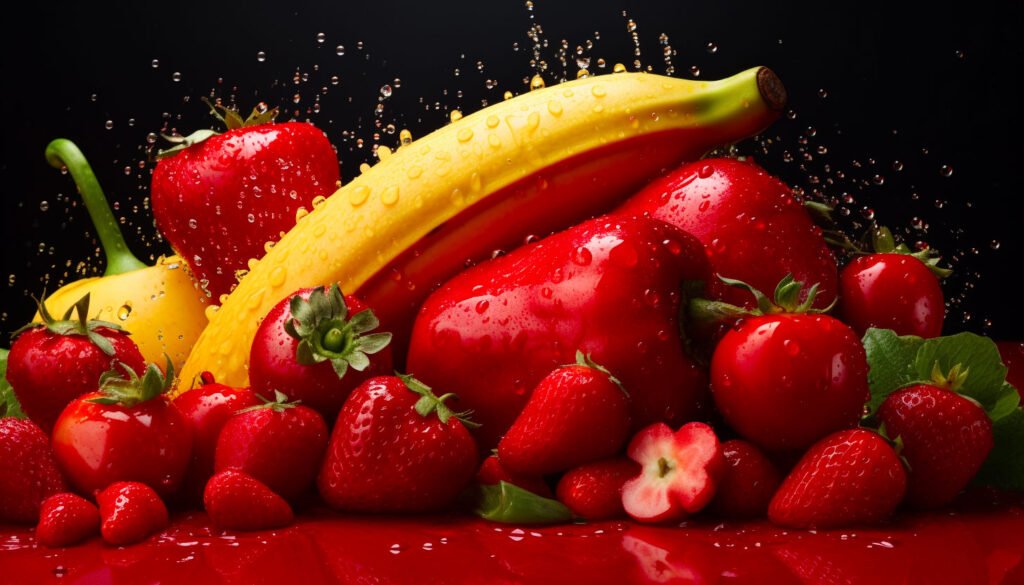Have you ever considered how color affects your experience when savor a delicious meal? Although taste and smell are the key senses that contribute to our enjoyment of food, it’s remarkable how much the colors on our plates can impact our perception of flavor.
The Psychology of Color
To fully comprehend how color and taste interact, it’s crucial first to grasp the psychology behind color. Color has a significant impact on our emotions, behaviors, and moods. Specific colors can elicit particular reactions and feelings. For instance:
1. Red: Often associated with passion and intensity, red can stimulate the appetite and create a sense of urgency. Many fast-food chains use red in their branding for this reason.
2. Green: Green is usually associated with freshness and health. Organic or natural products often have green packaging as it can convey a sense of vitality and well-being.

3. Yellow: This cheerful color can evoke happiness and warmth. It’s primarily connected to sweet and comforting foods.
#Seasoning and #dressing #manufacturing companies are adopting #automation and #AI #technology to maximize #productionefficiency: https://t.co/qp4PUbXRku
— TBRC (@tbrc_info) March 17, 2021
.
.
.
.#Robotics #ArtificialIntelligence #Spices #Herbs #Sauces #SaladDressing #Flavoring #FoodColor #TBRC #GlobalMarketModel pic.twitter.com/wpHCWEhP6X
4. Blue: Blue is known to have a calming effect that can sometimes reduce appetite. However, when used sparingly, it can improve the perception of freshness and cleanliness.
Let’s examine how these psychological associations with color impact our sense of taste and smell.
Color and Taste
Flavor Expectations: When we see a particular color on our plate, our brain anticipates certain flavors based on our past experiences. For example, we expect red foods to be sweet or tangy and green foods to be fresh and vegetable. This preconceived notion can affect how we perceive the taste of the food.
Sweet vs. Savory: Warm colors like reds and yellows are often associated with sweetness, while more excellent colors like blues and purples are linked to savory or umami flavors. This association can influence our taste perception, even when the flavor remains constant.
Portion Size Perception: The color of your plate can affect your perception of portion size. Researchers have found that when the color of the food contrasts sharply with the scale, it can make the portion appear larger, potentially influencing how much we eat.

Color and Smell
1. Our perception of food aroma can be influenced by its appearance. When presented with food that has vibrant and delicious colors, our brain signals our olfactory system, enhancing our sensory experience.
2. Color can also affect our emotional response to aromas. For instance, red may make us more receptive to sweet and fruity scents, while green could enhance our perception of fresh and herbal notes.
3. The presentation of food is crucial in stimulating our appetite. Chefs often use attractive and bright colors to make their dishes appear more appealing and flavorful, enticing diners to try them.

Food businesses often use red and yellow in their logos because they are associated with psychological and emotional triggers that benefit the industry. These colors are chosen for various reasons, such as their ability to attract attention and stimulate appetite.
Specific colors can stimulate appetite, with red and yellow known for this effect. Red can evoke passion, excitement, and intensity, while yellow is often associated with happiness, warmth, and positivity. Incorporating these colors into food logos can make products appear more enticing, which is particularly advantageous for fast-food chains and restaurants seeking to attract hungry customers.
Red and yellow are highly attention-grabbing colors that stand out in the visual field and are easily noticeable, even from a distance. This is especially important for food businesses, particularly those with outdoor signage or operating in crowded marketplaces. Choosing a logo featuring these colors increases the likelihood of catching potential customers’ eyes.
Food chain logos
Many successful fast-food chains, including McDonald’s and KFC, have logos incorporating red and yellow. These logos have become iconic and widely recognizable over time. Other food brands may use similar colors to tap into consumers’ familiarity and trust with these established chains.
The psychological associations of red and yellow are significant. Red can indicate sweetness, while yellow can convey warmth and comfort. This can communicate the taste and qualities of the food products, influencing consumers’ perceptions.
Red and yellow are high-energy colors that convey speed and efficiency. This is particularly beneficial for fast-food chains emphasizing quick service and convenience.

In some cultures, red and yellow are considered auspicious colors. Food businesses operating in these cultures may choose these colors to align with local beliefs and traditions.
The combination of red and yellow provides strong color contrast, making it easier to read text and logos. This is especially important for signage, packaging, and branding materials.
The interplay between color, taste, and smell is intriguing and multifaceted. Our brains naturally form connections between these senses, and how they interact significantly impacts our culinary experiences. Whether it’s the vibrant red of a ripe strawberry, the verdant green of fresh basil, or the golden shade of a perfectly cooked chicken, color adds an extra layer of delight to our dining experiences. Therefore, the next time you enjoy a delectable meal, take a moment to appreciate how hue elevates the symphony of taste and smell that plays on your tongue.






